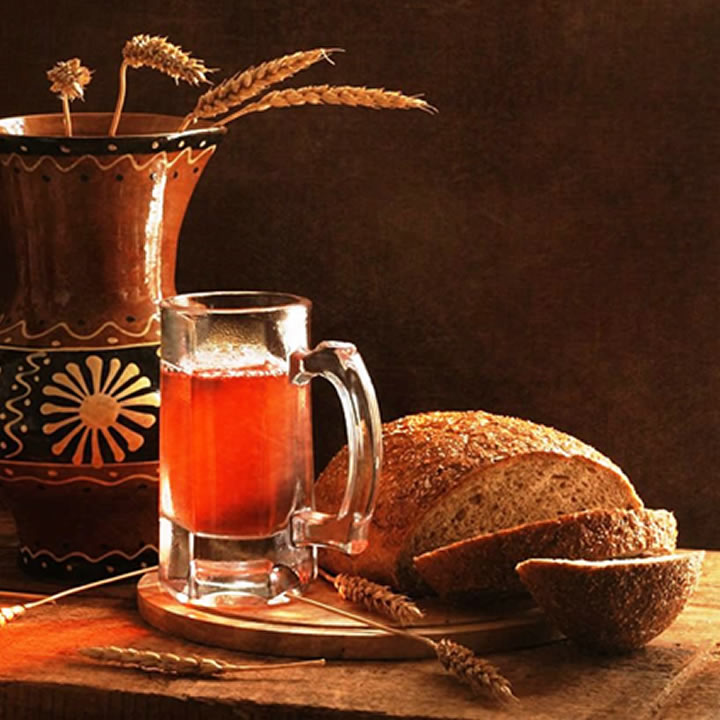In the heat of the summer, you can enter the first best supermarket and get lost among the rows and rows of sweet and non-sweet, carbonated, and non-carbonated cooling drinks. Zero carbs, zero sugar, vitamin-enriched, healthy, and cleansing options – the marketers have done their share of job to lure suspicious and wellness-seeking customers to their products. Just pick something and get a boost of fizzy and refreshing moisture to relieve your dry mouth and cool your sizzling brains. What a blessing, you may think.
But have you ever wondered what people drank for refreshment before the era of sodas and accessible lemonades? The interesting discovery will be that our ancestors were well-versed in making cooling and healthy drinks, and in many countries around the world, the millennia-old beverages are still served as hot summer staples. One of the most popular and historically accurate non-alcoholic beverages is kvass, and now we will look at the traditional Ukrainian variety of it.
Kvass: fermented, fizzy, fancy
This beverage is highly popular among many Slavic and Baltic nations, and for a reason. The process of its making is entirely natural, fizziness is a result of the fermentation of rye bread (sometimes with the addition of flour), sugar, fruit, and a small amount of yeast in a measure of warm water. After a couple of weeks in a dark warm location, the components blend into a sparkling, refreshing, aromatic, and tasty drink enjoyed by adults and kids alike. It is non-alcoholic, perfectly sweeten sour, fun, and refreshing to consume on scorching summer days.
Industrially manufactured kvass may lack the flavour and healthiness of the homemade one. It is easy to buy, but if you want to feel what the real Ukrainian kvass is, you have to make it. The good news is that the process does not require much effort or attention altogether.
Prepared kvass can be safely stored in a fridge and served with fresh mint, pieces of fruit, and berries for additional fruity notes, or enjoyed as is. As a product of natural fermentation, kvass is really good for health, and its sugar content can be reduced to a minimum and replaced by fruit.
Not your average drink – other uses of kvass
Kvass can be not only sweet, but also on the sour side, made with bread, yeast, and spices like clove, cumin, coriander, and a couple of allspice grains. Such kvass can be drunk for refreshment or used as an ingredient for various dishes, including borshch and okroshka. This kind of kvass will have a pronounced sour taste with a spicy aroma, that’s why it is used for giving a punch of flavour to main courses.
Bread kvass is used mostly for okroshka – a cold variety of soup served in summer. Vegetables, meat or cold cuts, and boiled eggs are diced and kvass is poured over them. This kind of soup is very refreshing and is a favourite summer meal course in Ukraine and Russia.
Borshch requires a different kind of kvass. It is made of fermented beets and used solely for the preparation of borshch. But this fermentation product is also called kvass. It does not lose its acidity during the cooking process, and to some extent, Ukrainian borshch is so popular around the world due to this particular savoury taste and colour delivered by beet kvass.
Yes, your introduction to traditional Ukrainian cuisine is incomplete without kvass. So roll your sleeves and prepare some at home – or enjoy craft kvass made by Ukrainian brewers using old recipes. The fun of partaking in ages-old processes and the flavorful and tasty result are definitely worth it.

